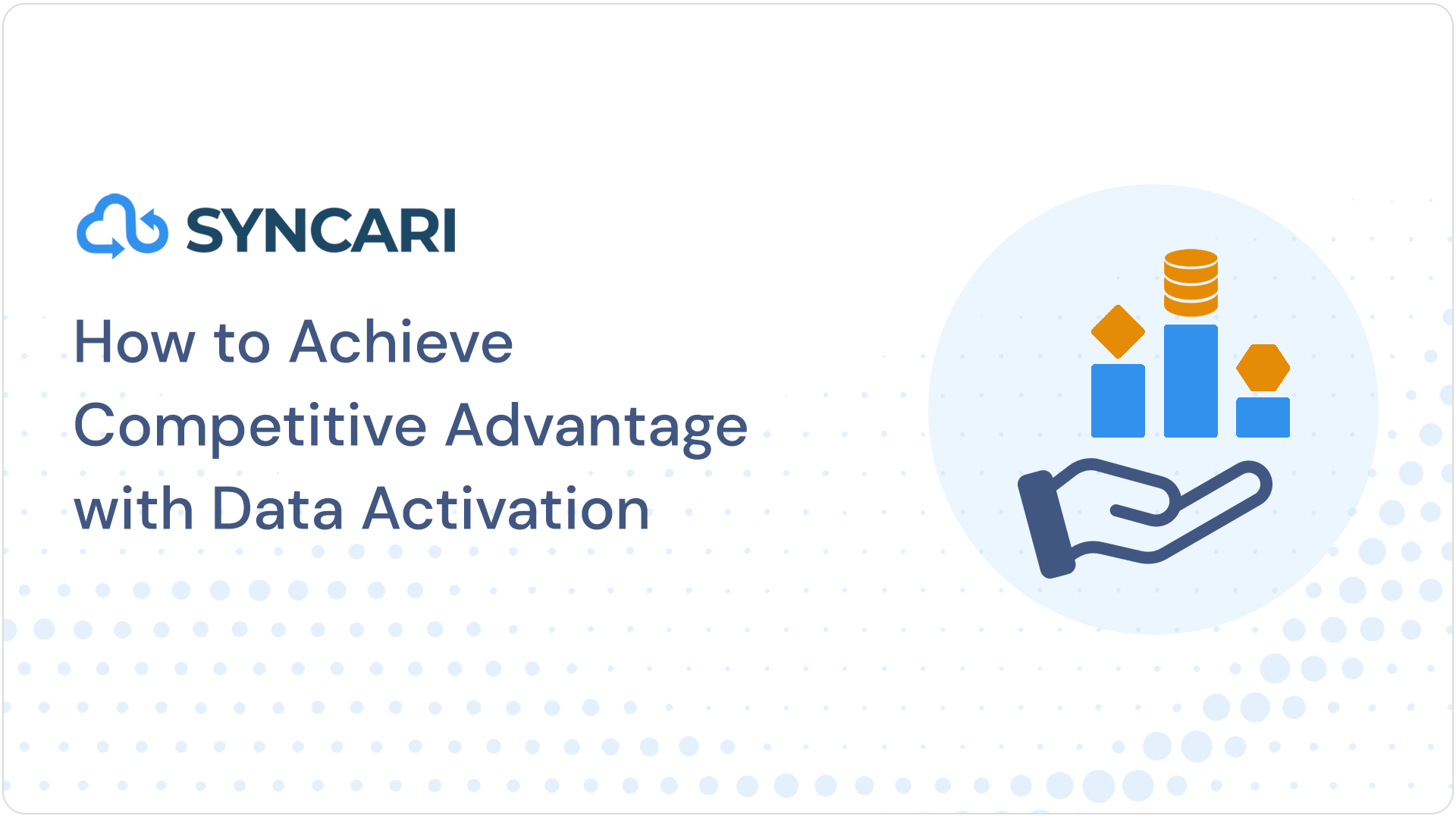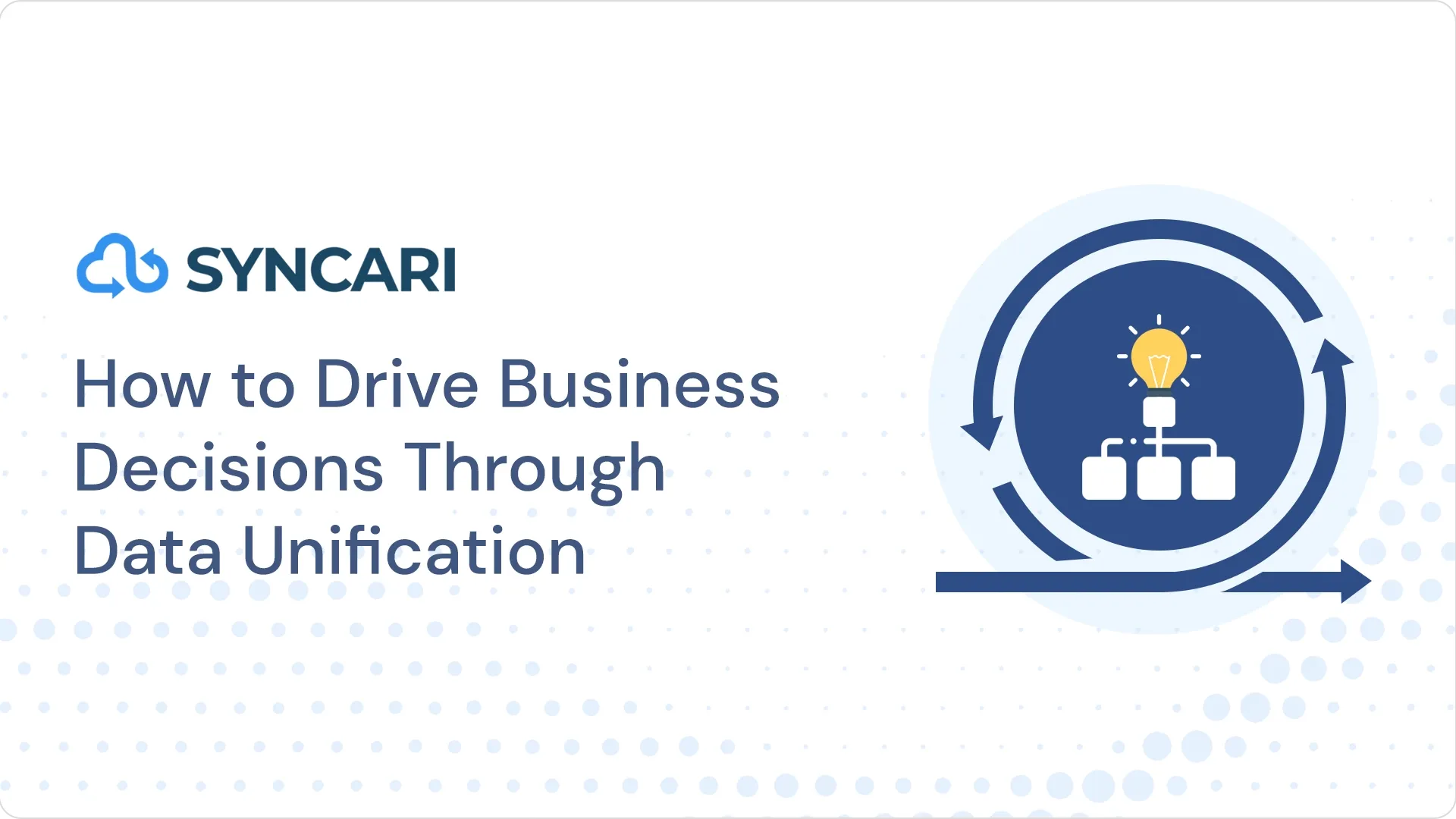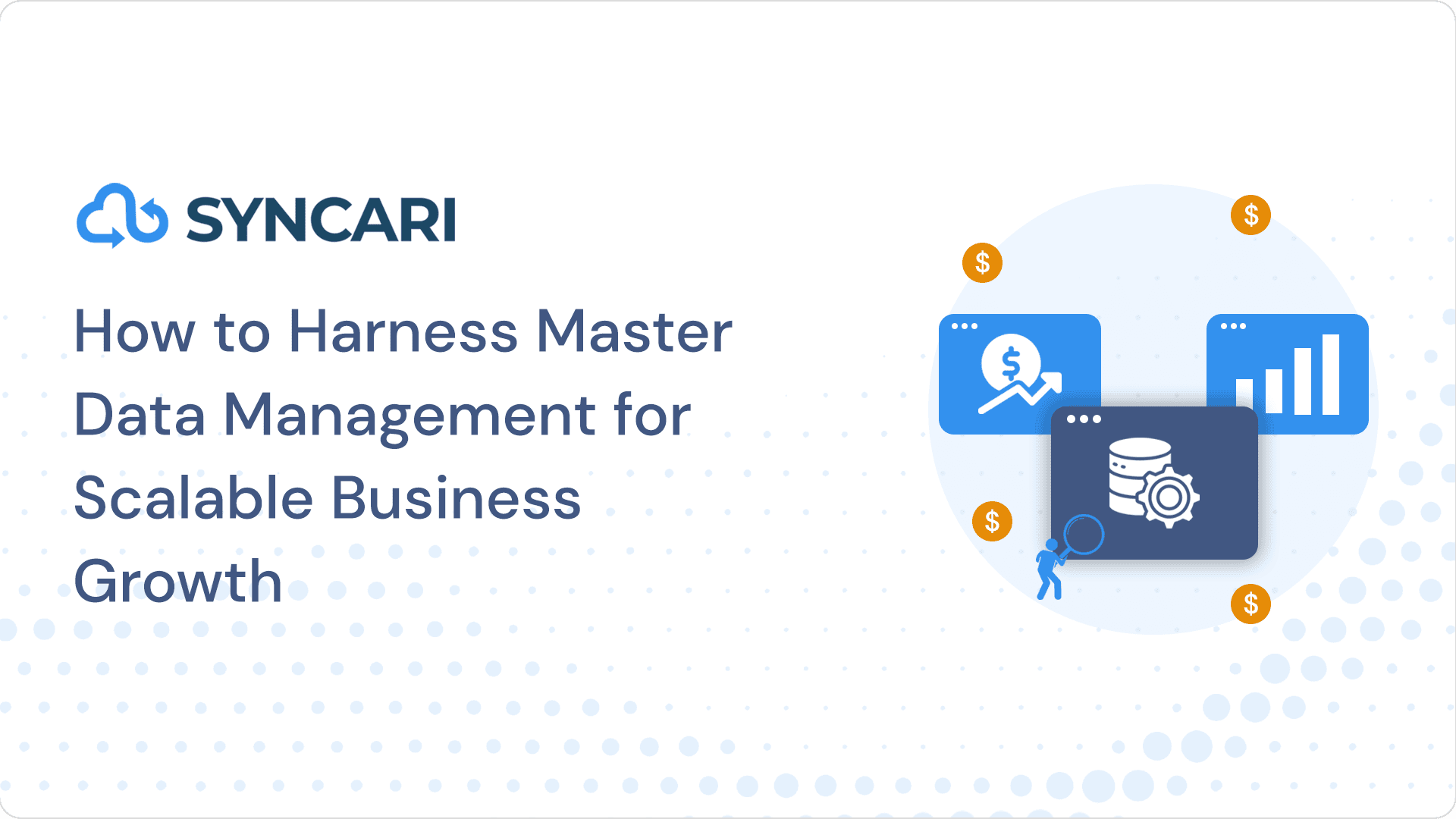Celigo is a comprehensive Integration Platform-as-a-Service (iPaaS) solution that enables straightforward and quick integration, allowing organizations of all sizes to link their services. Numerous companies count on it to integrate their cloud apps and synchronize data, automate tasks, and improve productivity.
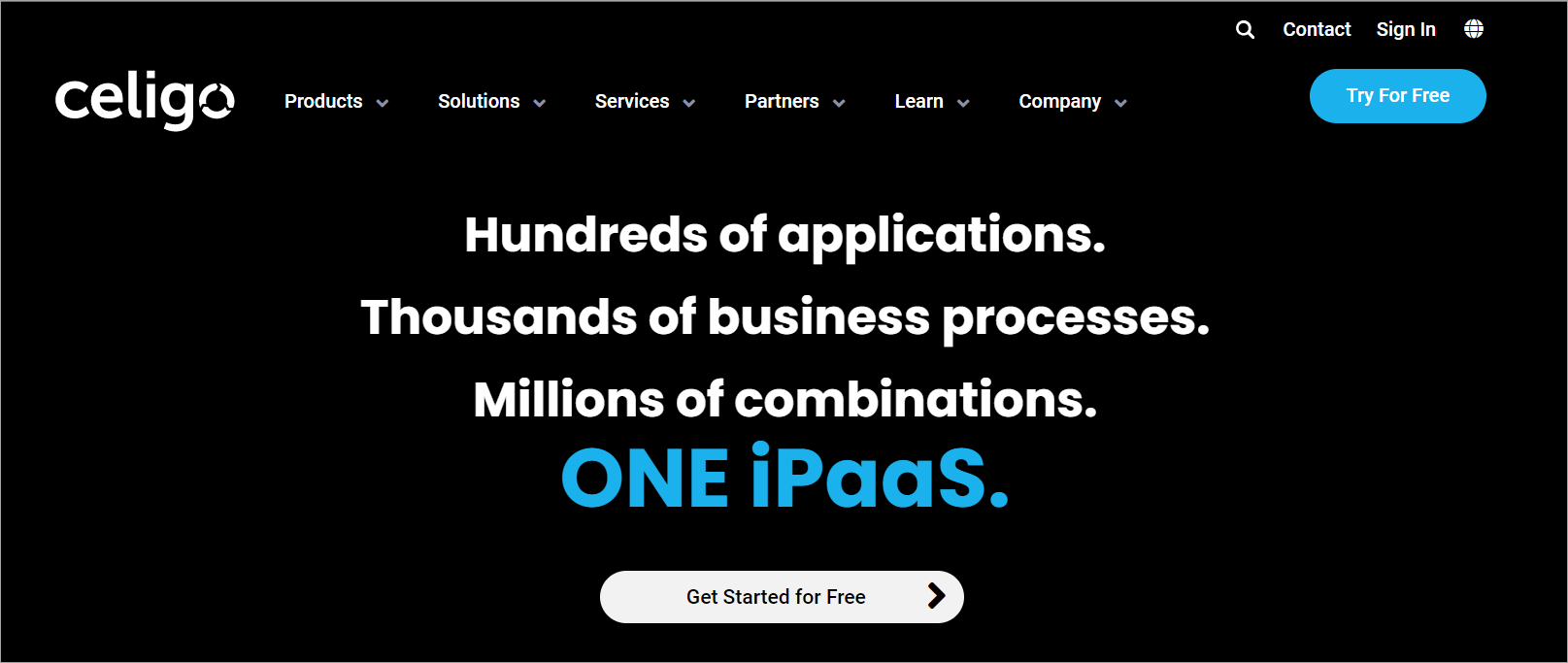
The integrator.io iPaaS platform from Celigo enables companies and IT clients to connect to any web application seamlessly. Integrator.io provides corporate customers with a supervised user interface and themes with pre-packaged processes, allowing them to create, add customized business functionality, and maintain interfaces without using a single word of code.
[Related: No-code customer data automation]
Integrator.io is a sophisticated platform for IT users to create complicated business automation routines, including the option to incorporate custom JavaScript.
Celigo also includes Integration Apps, a collection of pre-made, highly scalable integration apps based on the integrator.io iPaaS framework.
Features
Real-Time Integration
It allows for an event- or payment integration that adapts to changes in time.
API Designer
With Celigo’s API Designer, users can quickly (and easily) create and manage custom APIs that integrate with a wide range of applications and systems. It’s essentially a web-based tool for creating, describing, and evaluating APIs.
The platform’s intuitive interface and features make it easy to define your endpoints, set up authentication, and also test APIs in real time. This enables businesses to build and deploy custom integrations that meet their unique requirements (in a rapid manner).
Flow Designer
Celigo’s Flow Designer is a powerful web-based tool that allows users to create complex integrations and workflows without having technical expertise or knowing how to code. It has a fairly intuitive drag-and-drop interface and large library filled with pre-built connectors.
Overall, Flow Designer makes it easy to build and customize integrations to meet specific business needs. And it enables integration development by visually modeling unification logic cycles using a drag-and-drop user experience.
Prefabricated Connectors
Prefabricated connectors in Celigo are pre-built integrations that connect two or more applications, enabling data to flow between them seamlessly. These connectors are designed to work out-of-the-box, and can often be configured and deployed in a matter of minutes. This makes it easy for users to connect their favorite (or most used) apps and streamline their workflows.
In turn, API creation and connections are made easier with preconfigured adapters, themes, and demonstrations.
Custom Connections
Custom Connections enables the creation of interfaces from current systems and APIs in the catalog.
Reusable connectors
Prebuilt, reusable connections and processes are provided for all customer integration needs.
Multi-tenant architecture
The multi-tenant architecture allows numerous occupants (clients) to access real computational power safely.
Tracking and Alerting
Portal for monitoring resource usage, system health, and the ability to initiate and terminate programs, among other things.
Scheduling and routing
Allows configuration-based data routing and the administration of complicated processes through an automation system.
Data Mapping
It enables data translation across app services based on the data architecture.
Security Requirements
To preserve and safeguard data, adhere to essential industry standards such as SOC 2, ISO 27001, PCI DSS, HIPAA, and others.
Automated File Transfers
It offers one or more techniques for securely transferring information from one location to another across a system.
Hybrid
It allows for the development of collaboration apps both on-premises and in the cloud.
Big Data Processing
Big Data Processing provides access to Big Data sources such as Hadoop and other NoSQL sources.
Celigo Pros:
- It’s easy to use and offers a broad range of applications. It is simple to set up and comes with an extensive feature set.
- Great support helped us overcome obstacles. The UI is user-friendly and attractive.
- High quality integrations! Simple interface with NetSuite and other apps. Integrations are generally easy to implement, and an extensive range of machine translations are available to make network interaction effective and smooth.
- It lets a small team instantly communicate, connect, administer, and analyze various data sources and terminals.
- Easy to establish bespoke API connectors.
- Celigo connects with your database while you work, enabling you to retrieve dropdown list values directly from your database.
- Celigo offers a high degree of customization and flexibility, allowing users to tailor their integrations to meet specific business needs.
- It supports a wide range of popular business applications such as Salesforce, Shopify, Amazon, and more. This makes it a versatile solution for many organizations.
- Celigo’s real-time sync capabilities ensure that data is always up-to-date and accurate, and thus reduces the risk of errors or potential discrepancies.
- Celigo is highly scalable — it can easily accommodate growing businesses and evolving data needs.
- Celigo provides detailed analytics and reporting capabilities, allowing users to gain insights into key performance metrics and track their integration performance over periods of time.
Cons:
- It might be challenging to determine what is causing a flow issue. You have to call for assistance occasionally to determine the nature of the problem, but they are quick to correct.
- There may be additional support data to assist with flow issues. This might result in a training course for sophisticated connections when teaching existing infrastructure on how to utilize the program successfully.
- It might be challenging to solve sync issues which can be extremely time-consuming and frustrating.
- The problem codes are generic. It’s often necessary to look at the source data for both SaaS tools connected and visually run through a checklist of fields to ensure they are still in sync.
- Celigo can be quite complex and may require a fair amount of training for users to operate it effectively (particularly for more advanced integrations or customizations).
- Some users have reported difficulty with troubleshooting issues. In particular, when it comes to identifying the root cause of errors or workflow issues.
- Celigo’s pricing can be high, especially for businesses that require a high number of integrations or advanced features.
- It’s possible that this platform might not be suitable for organizations with very specific (or unique) data requirements because the integrations may not fully meet their needs.
- While Celigo’s customer support is generally responsive and helpful, some users have experienced trouble (and reported their difficulties) when it comes to getting timely assistance for complex issues.
Celigo Cost Structure
Celigo features four price editions ranging from $0 to $2,500. Examine the various price versions below and learn more about the service here to choose which is best for you. There is available free trial option.
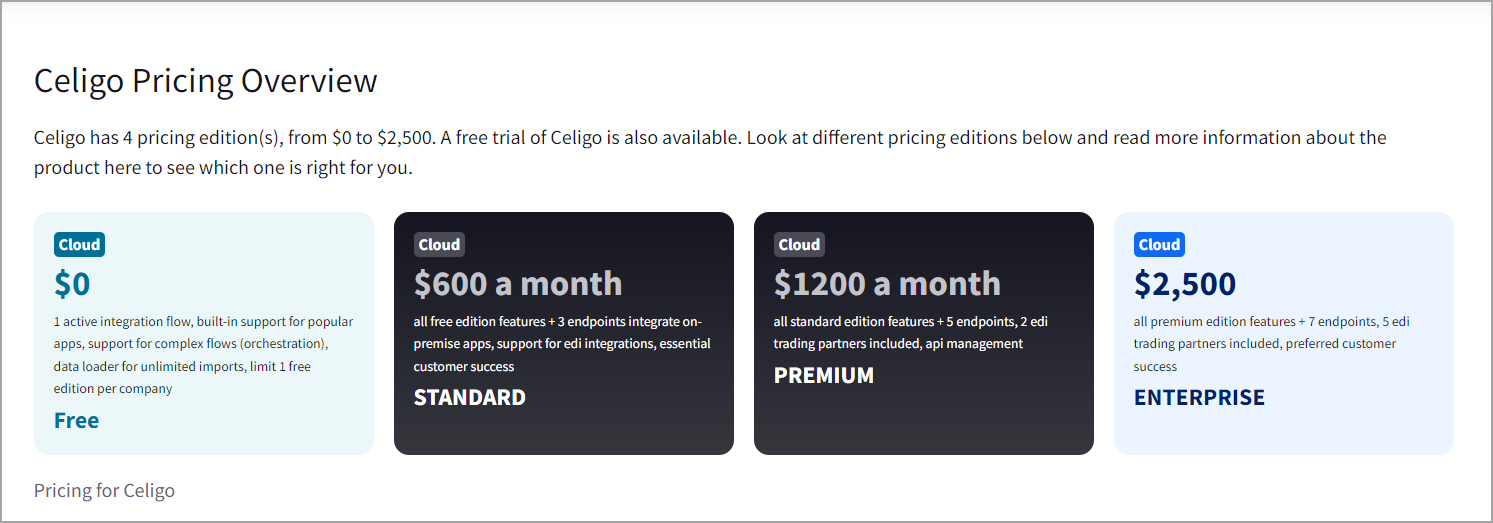
[Source: – TrustRadius]
Celigo Cost: Value for Money?
Celigo is an excellent iPaaS tool that provides integrated solutions, such as Smart Connectors, IO IPaaS, and others. Data gathered from these features is extremely useful for making business decisions.
The free and standard plans offer limited functionality. However, the cost is prohibitively high for some firms. If you want to use some of the best features, you should go for premium or enterprise subscriptions.
A different piece of software that provides income tracking for icons and hyperlinks is also an option. Big businesses are taking advantage of these functionalities in their corporate analytics solutions.
What’s the best possible alternative?
While the fast adoption of cloud architecture and SaaS technologies by big and small businesses has resulted in several advantages, it has also caused significant issues in dealing with various systems of reference and data fragmentation.
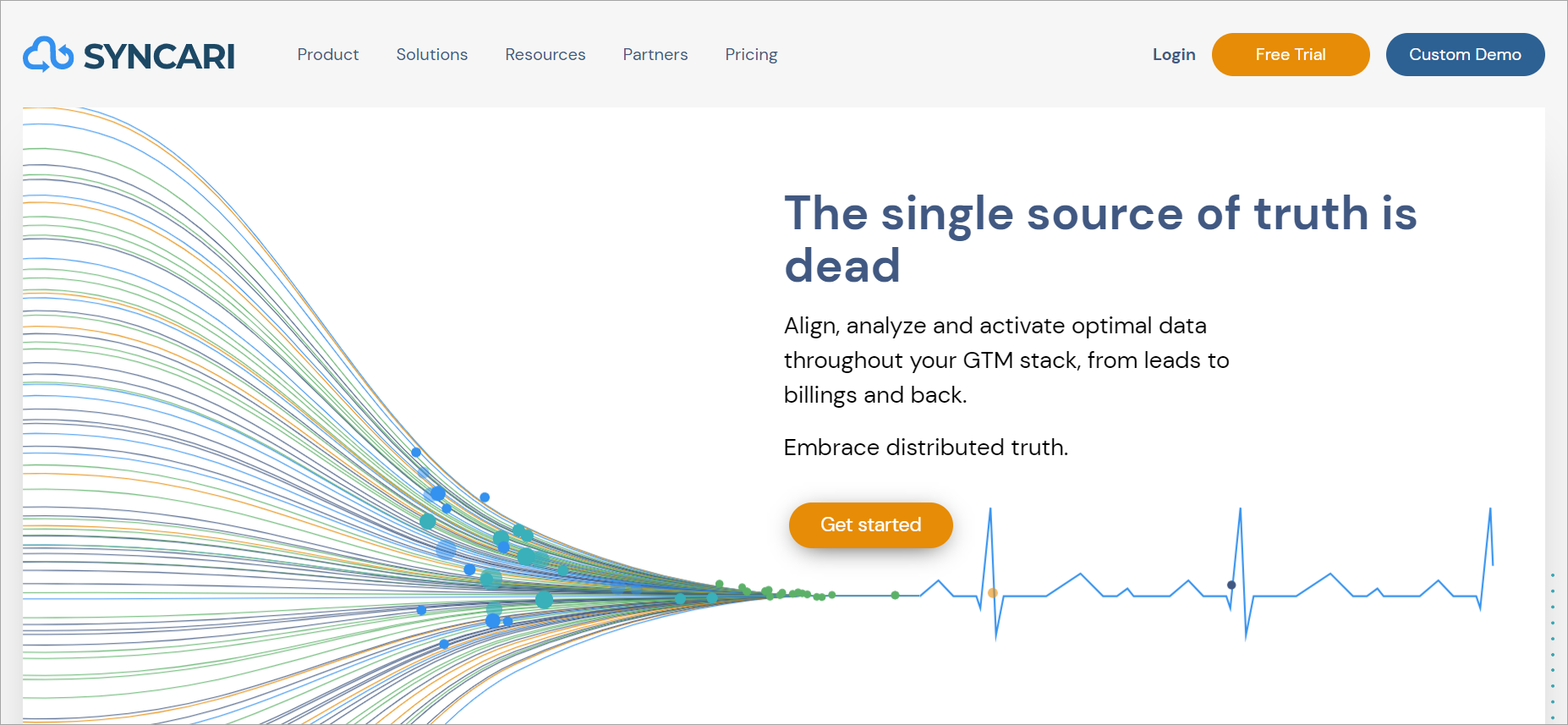
A data automation platform from Syncari enables operations personnel to align, analyze, and use reliable customer data throughout the organization. With a potent combination of data governance, process automation, and multidirectional synchronization, Syncari recovers data integrity. Visit Syncari for additional details.
The company’s system consolidates, smartly boosts, streamlines, and imposes the level of customer records, making it accessible across application components through contemporary omnidirectional synchronization, empowering companies to increase income and reduce churn as a result of inaccurate, insufficient information or delayed information.
Why Syncari?
Syncari is addressing a significant issue caused by the increasing proliferation of SaaS apps and cloud data sources distributed throughout the modern company. The thousands of point-to-point links built over the years using outmoded connectivity, RPA, ETL, or custom-coded technologies do not enable data collaboration throughout the organization.
When leaders and their staff can’t agree on fundamental facts and can’t discern factual information from insufficient data, no one can claim to be data-driven. The provisional patent invention Syncari developed a stateful two-way sync system that controls and manages data flow throughout the company. It accomplishes this by allowing non-technical enterprise customers to seamlessly connect diverse systems into a single uniform data structure, which formerly needed a team of specialists and a 6–12-month effort.
Syncari has also made data standardization, conversion, and maintenance far more accessible, making data management open to all. This implies that promotion can generate more quality demand by concentrating on the proper people in the appropriate accounts, sales can shorten transaction processes with a comprehensive consumer perspective, and client satisfaction can find supporters and minimize undesired churn.
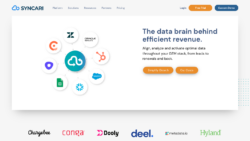
Syncari has a massive and transformational market potential to revolutionize data processing to address these concerns. Businesses now have two alternatives for achieving data integrity across their structures: patch together various ETL, data conversion, and data warehousing solutions – or utilize Syncari.
Syncari Cost
There are three price tiers for Syncari and you can try it out with a guided tour as well. View the various price editions below to choose which version and capabilities correspond to your requirements and budget.
Starter: $2,995/month
For experts in RevOps with few teams
- Three synapses (connector)
- 300,000 Records Synced
- standard data model
- Data splicing and visual field mapping
- Numerous no-code operations and functions
- Lots of work
- Index of Data Fitness
- Templatized processes
- Summaries, groupings, and roll-ups
Growth: $4,995/month
- Organizations with growing RevOps features
- Numerous Synapses
- 1 million or more files
- operational and executive panels
- writing unique reports
- Screenshots
- trend evaluation
Enterprise: Contact Syncari
- full automation of data
- Numerous Synapses
- countless records
- Capability for billions of records at the enterprise level
- sandbox situations
- specific price
On average, modern firms utilize various SaaS services, creating a constant need for new applications to access consumer data. As a result, transparency into end-to-end operations is frequently limited, and data validation suffers. Solving this challenge is difficult and costly, whether you use iPaaS solutions or more unique ideas like the contemporary data stack.
Customers of Syncari are already addressing this issue by synchronizing and managing data across leading business platforms. Syncari expands the capacity to process data and apply business rules uniformly across all enterprise systems, from offers to invoices.
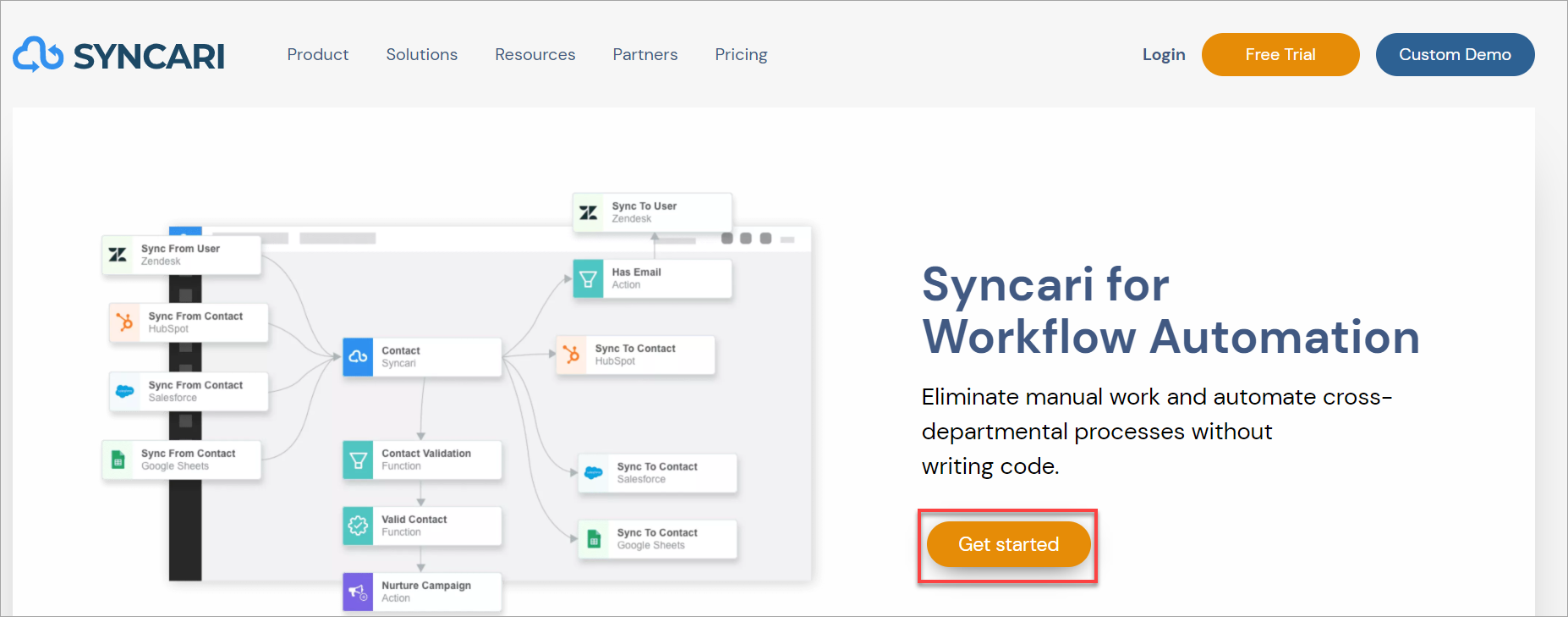
You now spend 75% less time retrieving data chores thanks to the new Syncari version. The automated monthly subscription firm grew in size and evolved into a multi-channel marketing organization, testing the limitations of its technology stack.
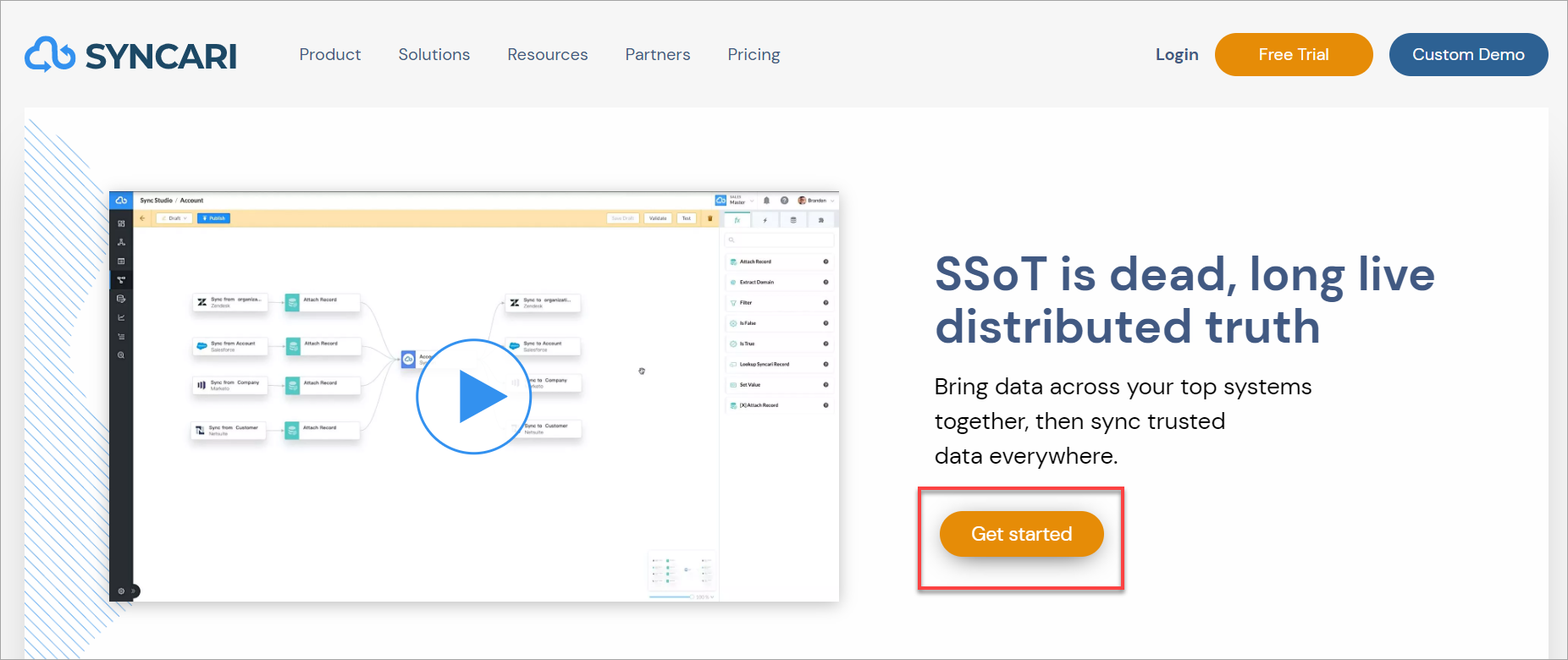
Your fragmented data can now be synchronized across platforms thanks to Syncari. Syncari’s data visualization and analytics feature effectively analyze cross-channel marketing effectiveness.
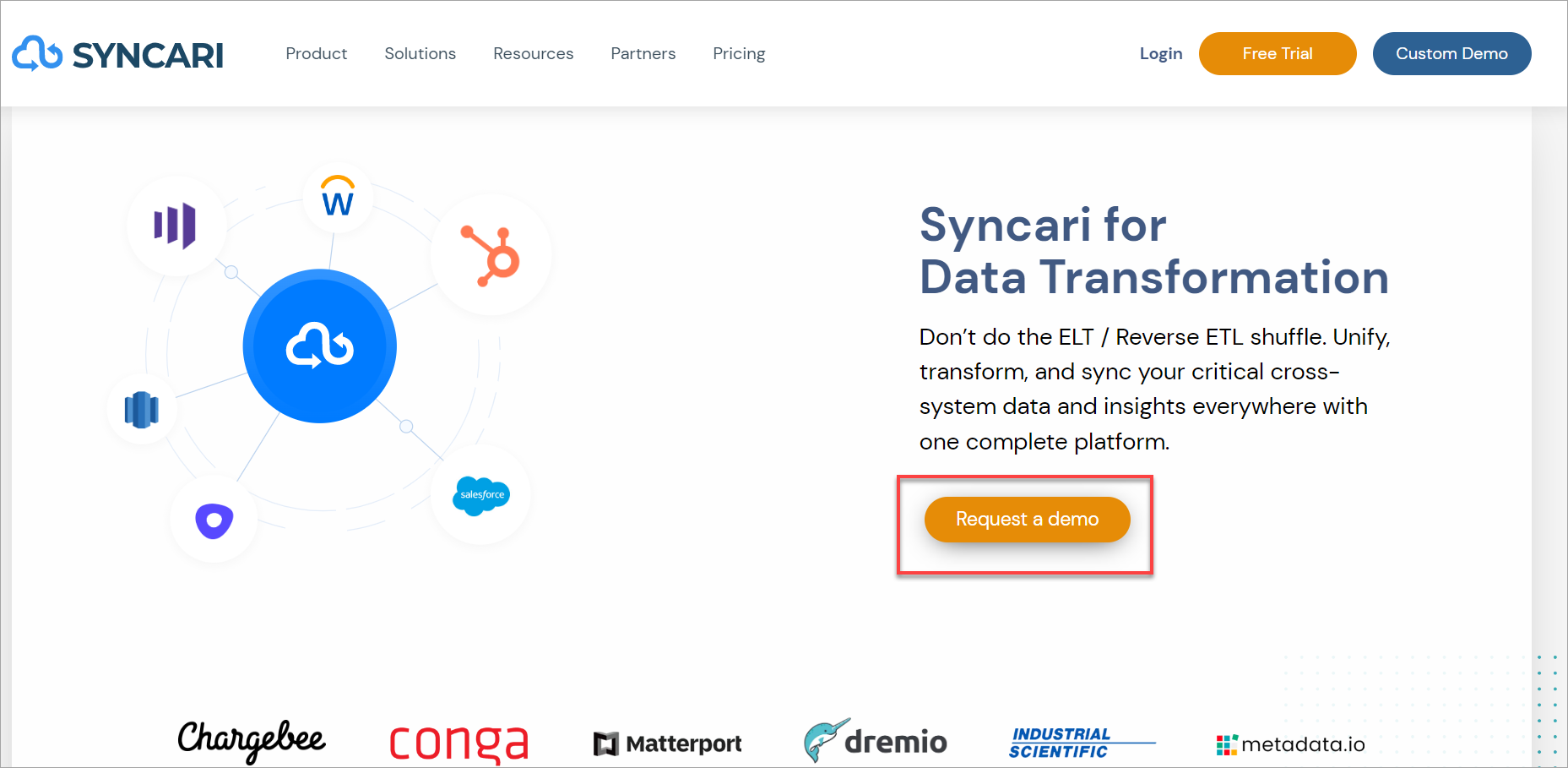
Analyze product usage statistics to discover income opportunities:
- Compatibility for native Postgres replication.
- Customers may use it to synchronize massive datasets, such as product consumption data, into Syncari.
- Algorithms that don’t require coding can filter, search, combine, and summarize product consumption data for functional metrics.
Generate findings by delivering them to the right people and systems:
- A multidirectional data-sharing platform for preventing churn, identifying upsell possibilities, and personalizing marketing approach.
- Custom Steps are used to create, construct, and define the actions that end systems should perform when potentially relevant signals are identified.
- Platform APIs allow an external system to handle Syncari analytics solutions, architecture, and translations, allowing even more comprehensive and sophisticated automation.
Sync data from the whole data ecosystem:
- Functional data center for organizing, managing, and interacting with data from several systems.
- Any system may be connected to Syncari using the Python SDK for Custom Synapses, allowing it to be integrated into the available data hub and synchronized in many directions.
- Enhanced Synapses for Hubspot Custom Objects and NetSuite Billing.
Syncari Pros
Marketing, branding, consumer experience, and profit operations personnel may minimize manual labor and simplify routine cross-departmental tasks with Syncari’s no-code framework, allowing them to:
Eliminate data silos
Integrating and unifying procedures to merge and combine data for typical marketing management, CRM, and ERP-centric processes have been significantly simplified by new and improved Synapses for various CRM.
Boost operating efficiency
Create processes quickly and easily with more than 100 drag-and-drop data operations, cross-system controls, and a beginner guide. Any procedure, including ELT, ETL, and inverse ETL, should use multidirectional conversions.
Fidelity to the data
Improve the efficacy and efficiency of cross-system processes by ensuring each system’s data is synchronized with all other systems that need it, compatible across the entire technology stack, and automatically regulated.
Quickly adjust to change.
Make global updates across processes after adding new data sources or schema changes to react rapidly to market changes and client demands.
Syncari Cons
- While Syncari complies with HIPAA regulations, several systems still need to develop interfaces.
- Complex data models necessitate a significant amount of work during setup.
- It’s important that the administrator is knowledgeable and judges each sector.
Request a Syncari demo
The amount of data collected in businesses’ CRM, marketing automation, and ERP systems are overwhelming. Productivity is inhibited, and revenue targets are more challenging to reach when essential operating teams must agree on whether data reflects reality. Schedule a meeting to see how Syncari can address your data issues.
Related topics:
